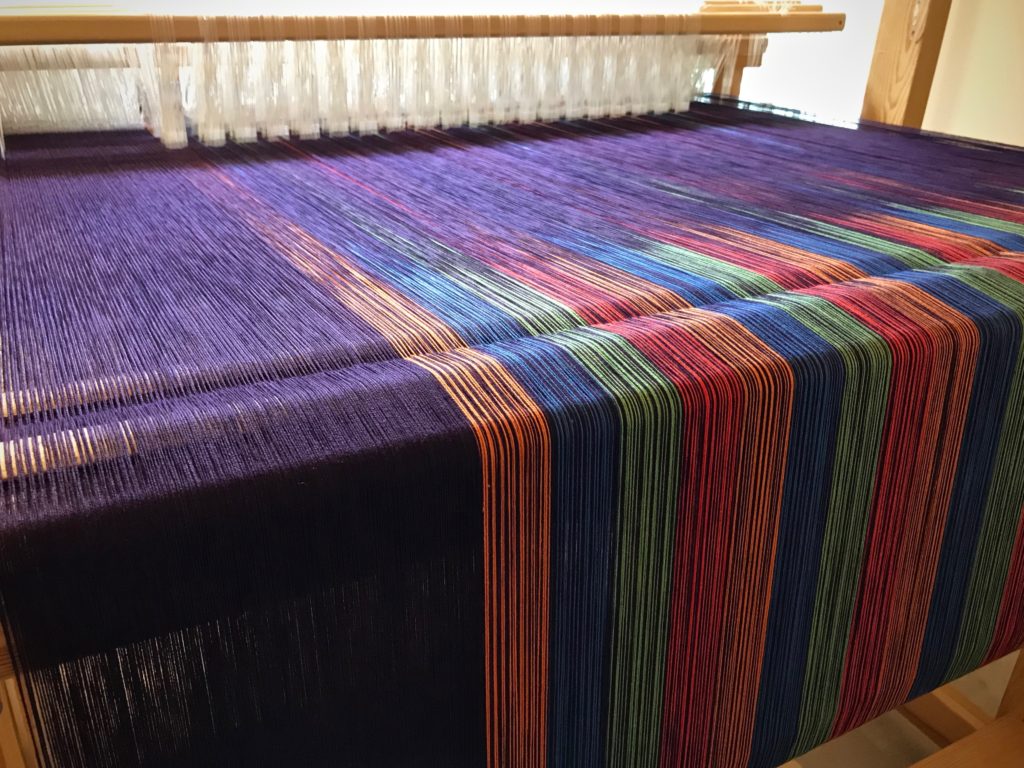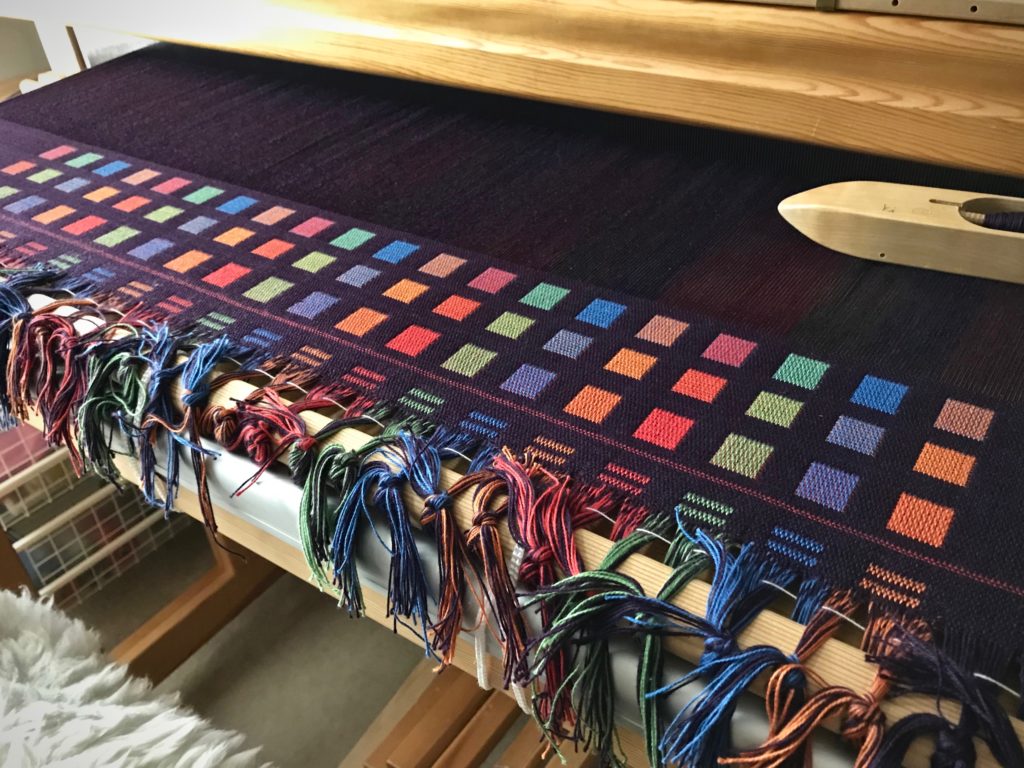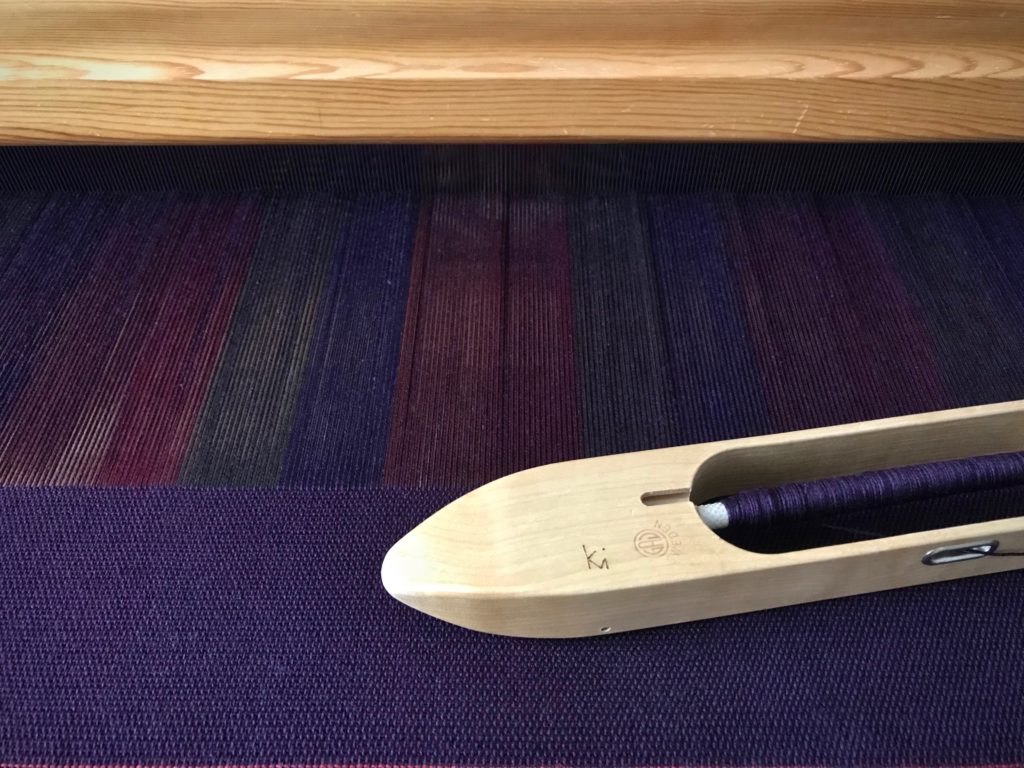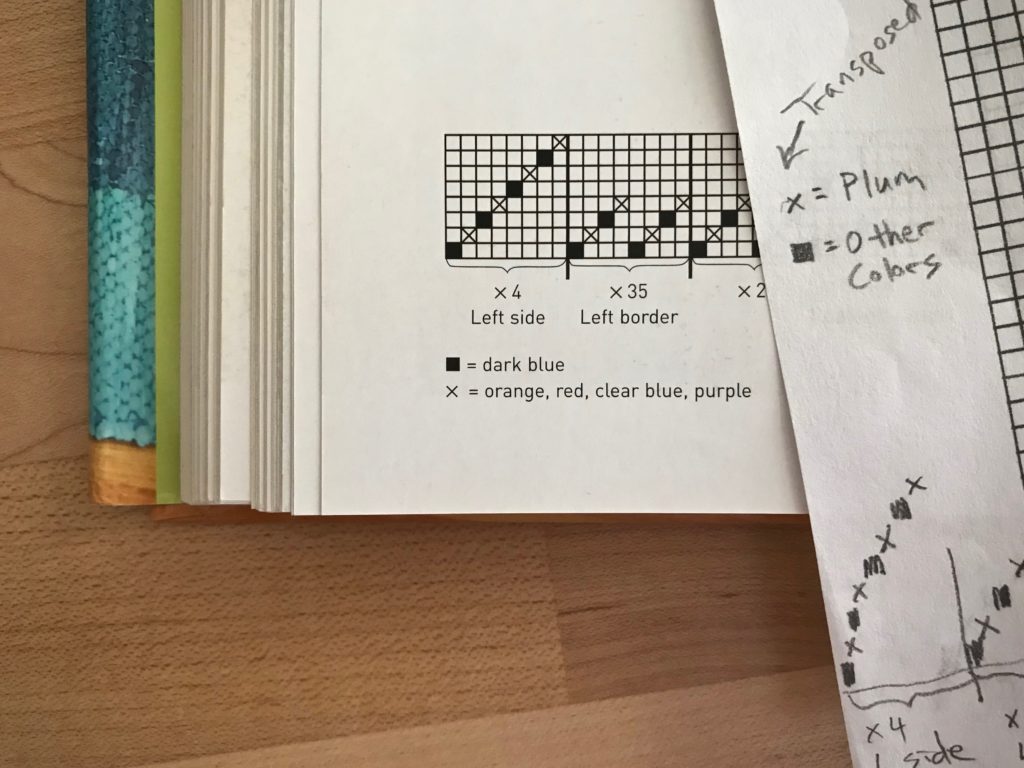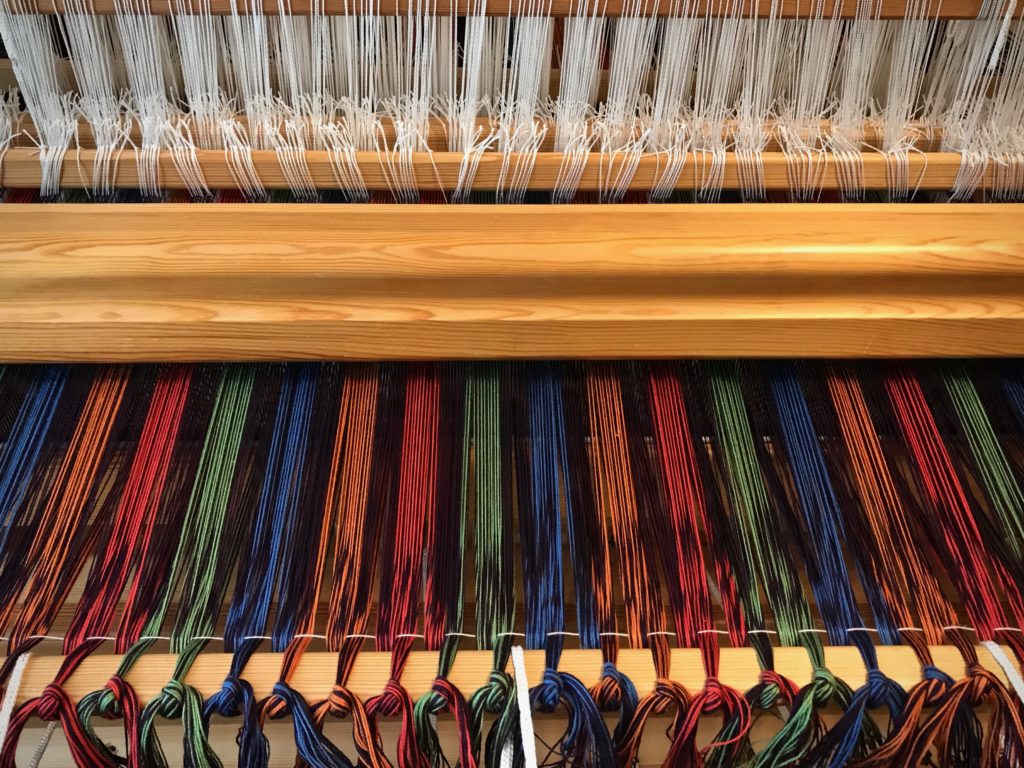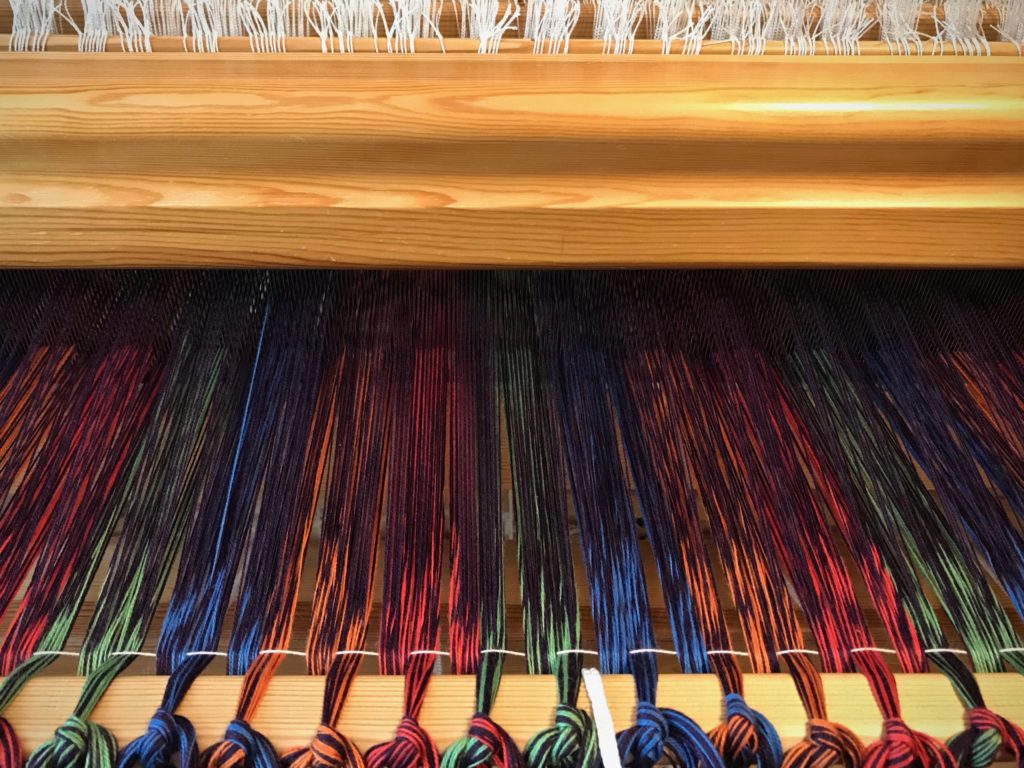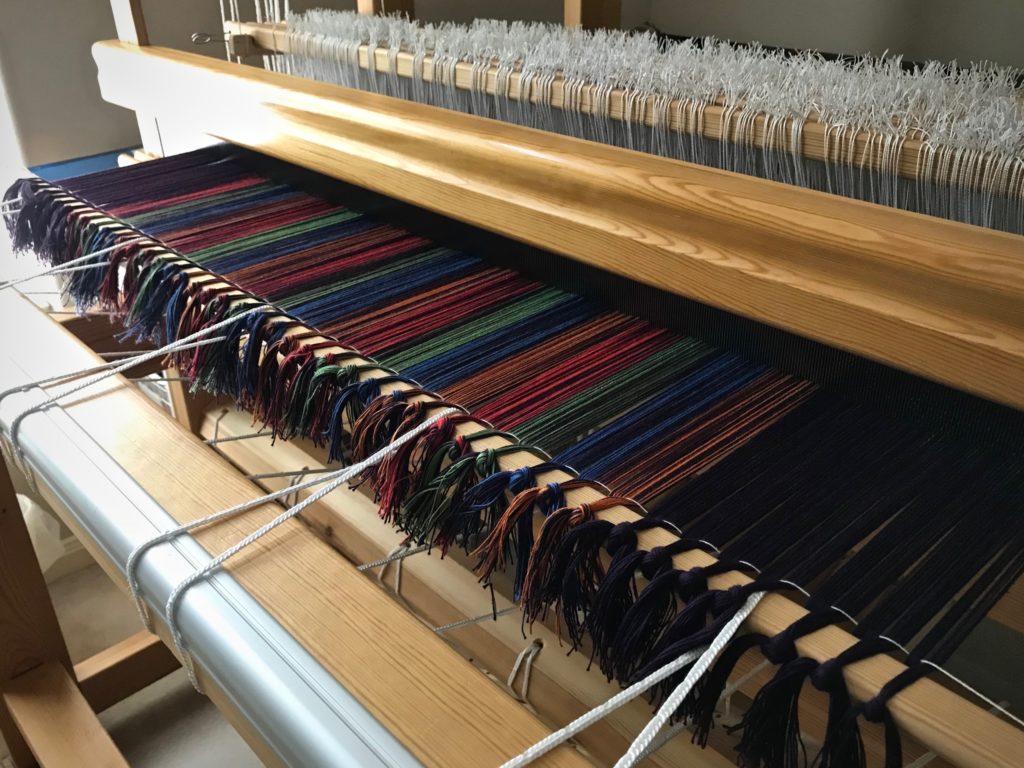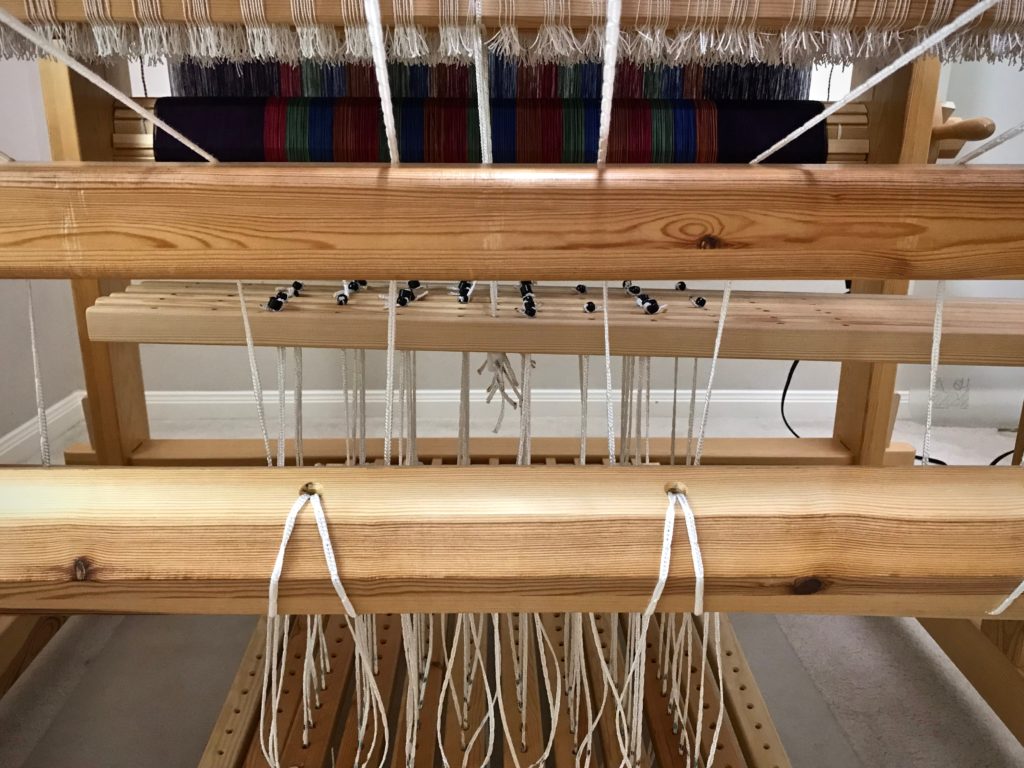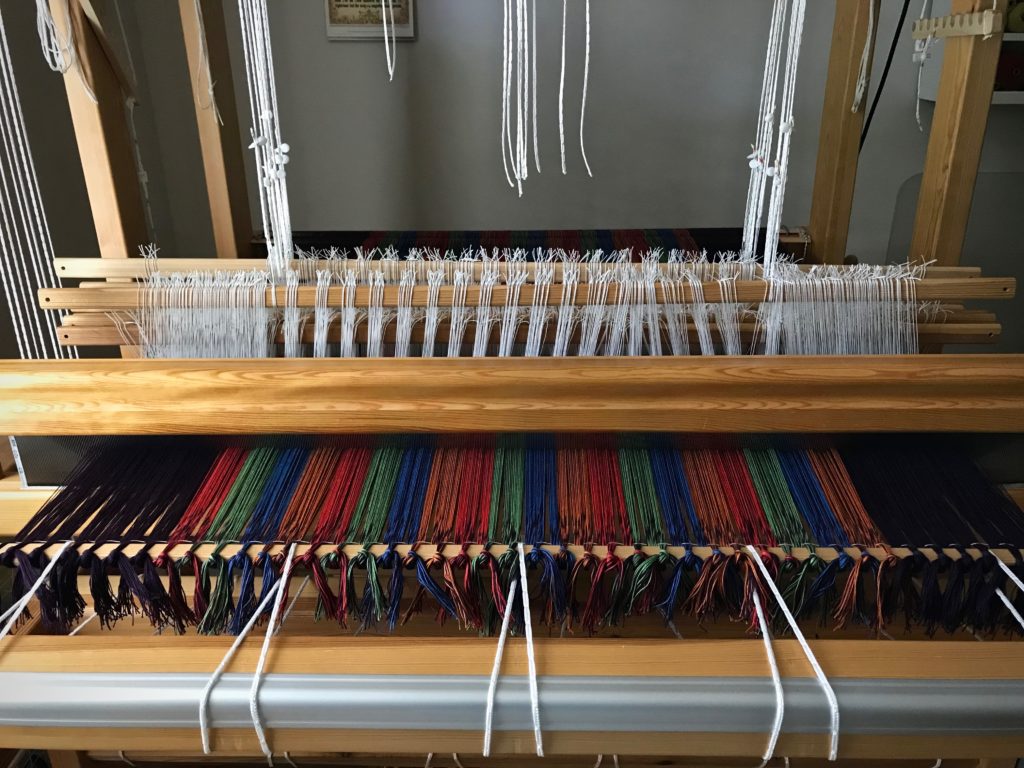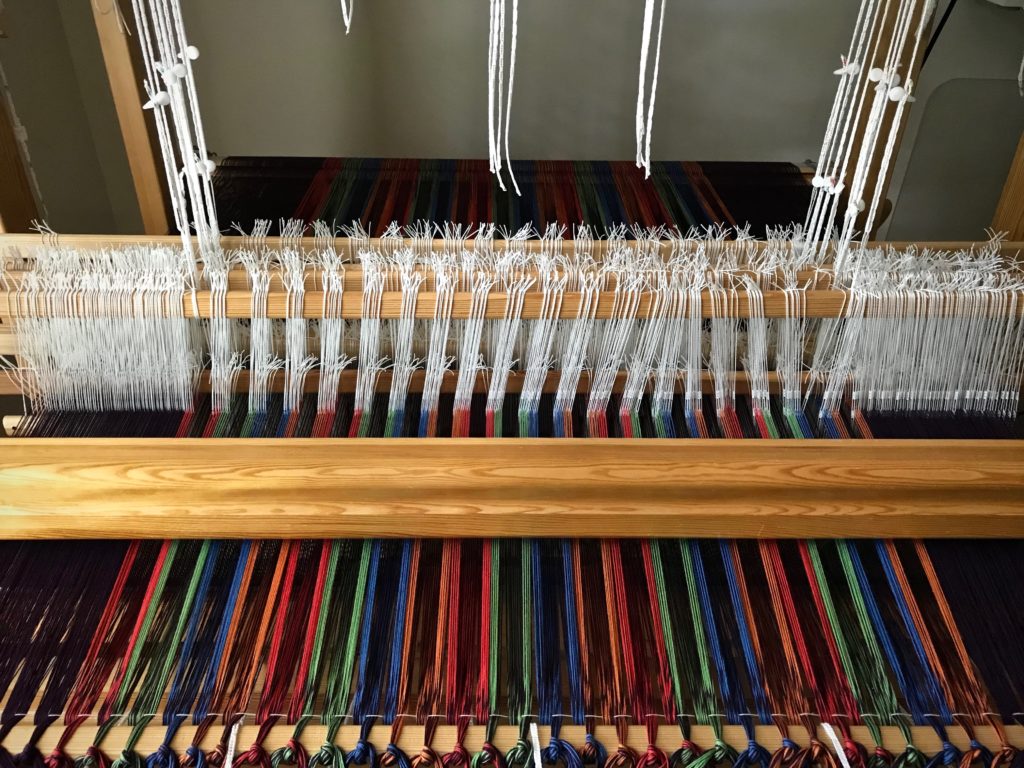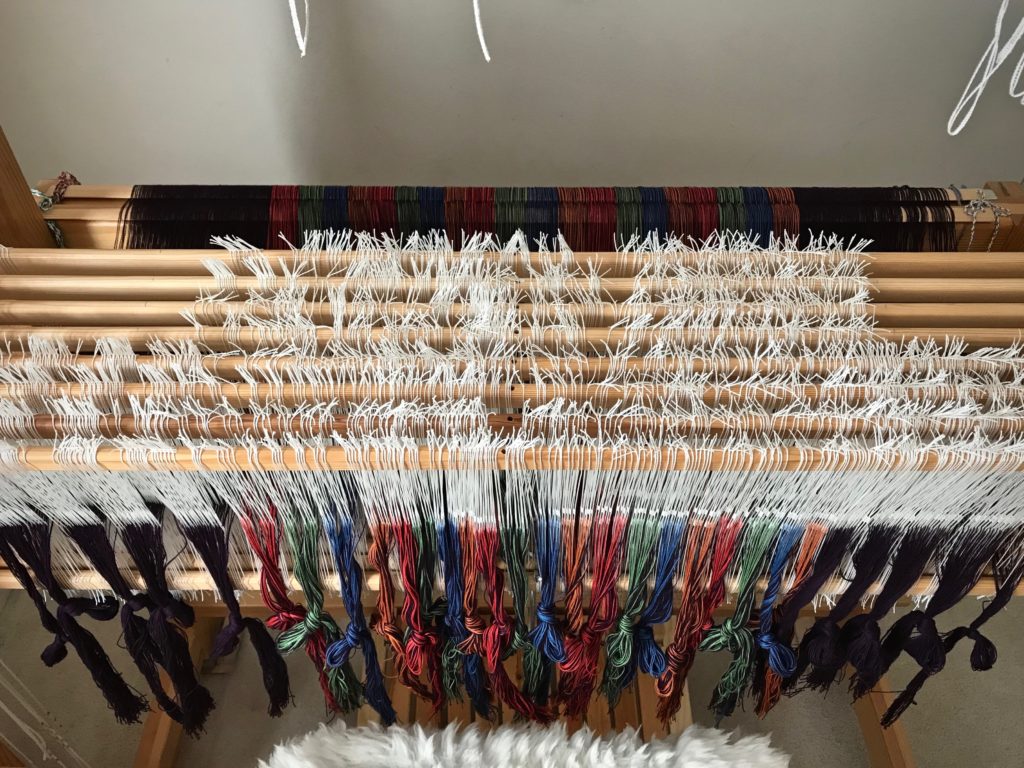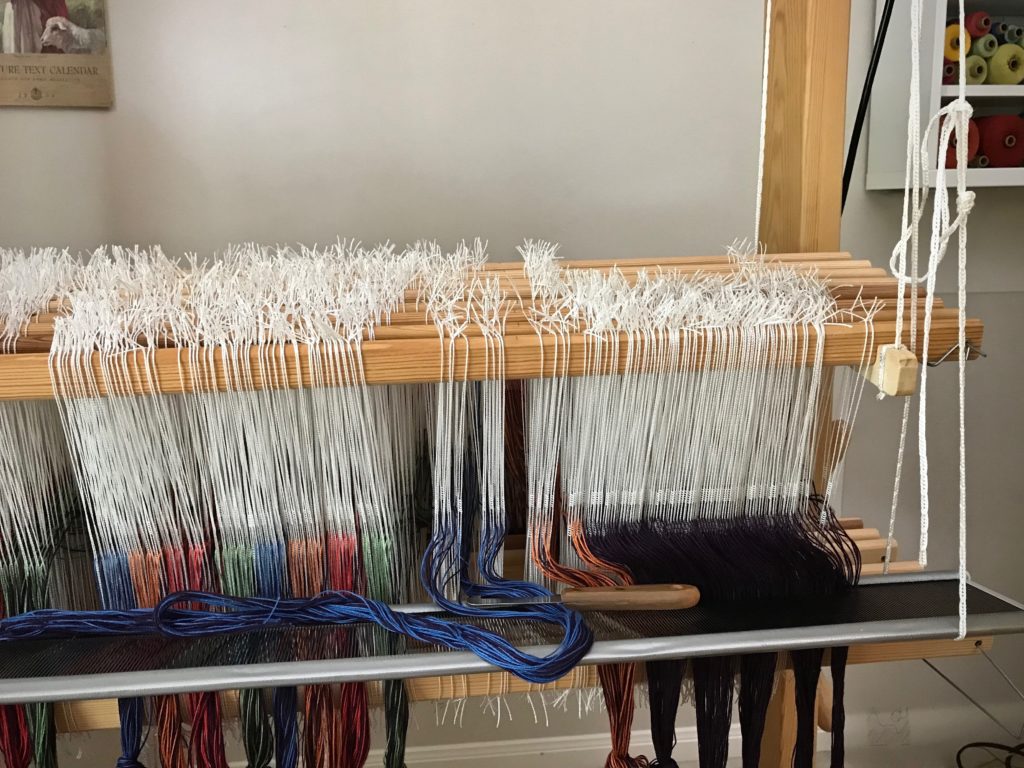Two layers of cloth exchange places in this double weave structure. One layer of warp is solid deep plum. The other layer has stripes of bold colors. Clean lines occur where the layers switch places. So, with deep plum weft alternating with orange, blue, green, and red weft, we get a message written in clearly-defined blocks: Be invigorated with vibrant color!
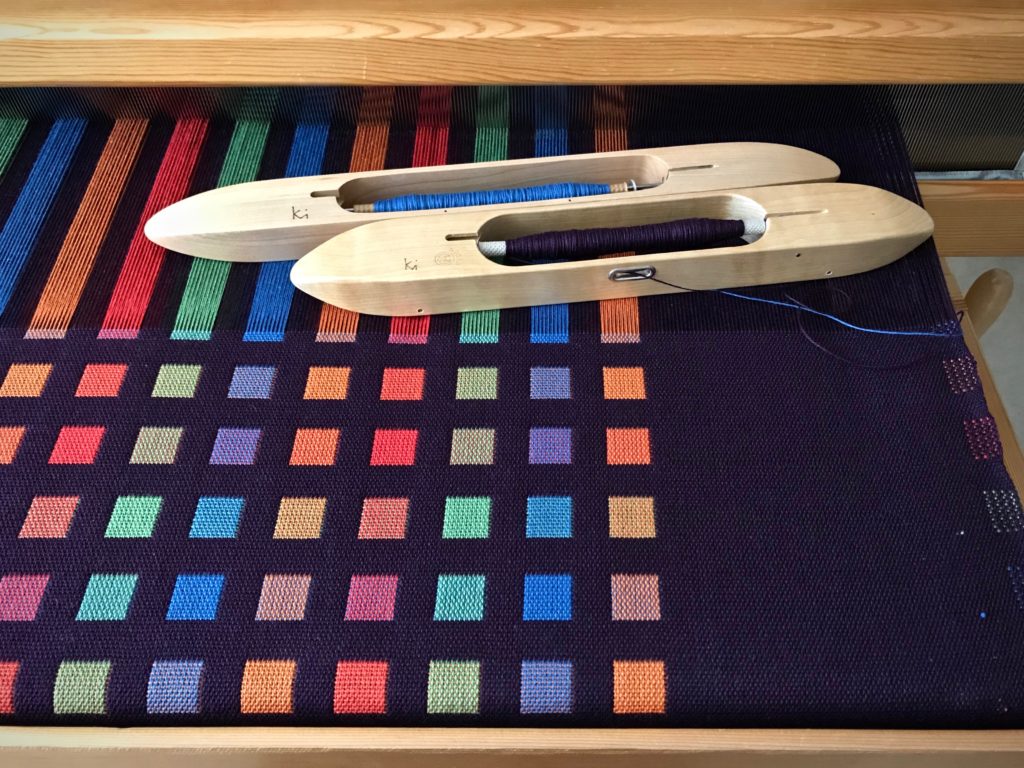
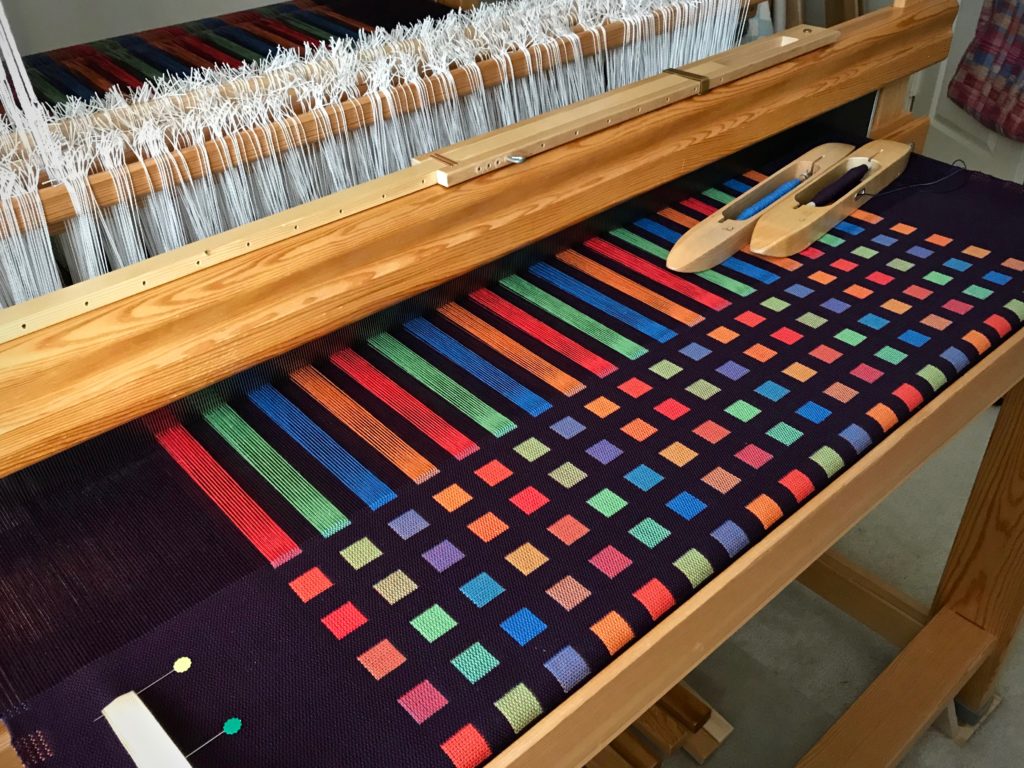
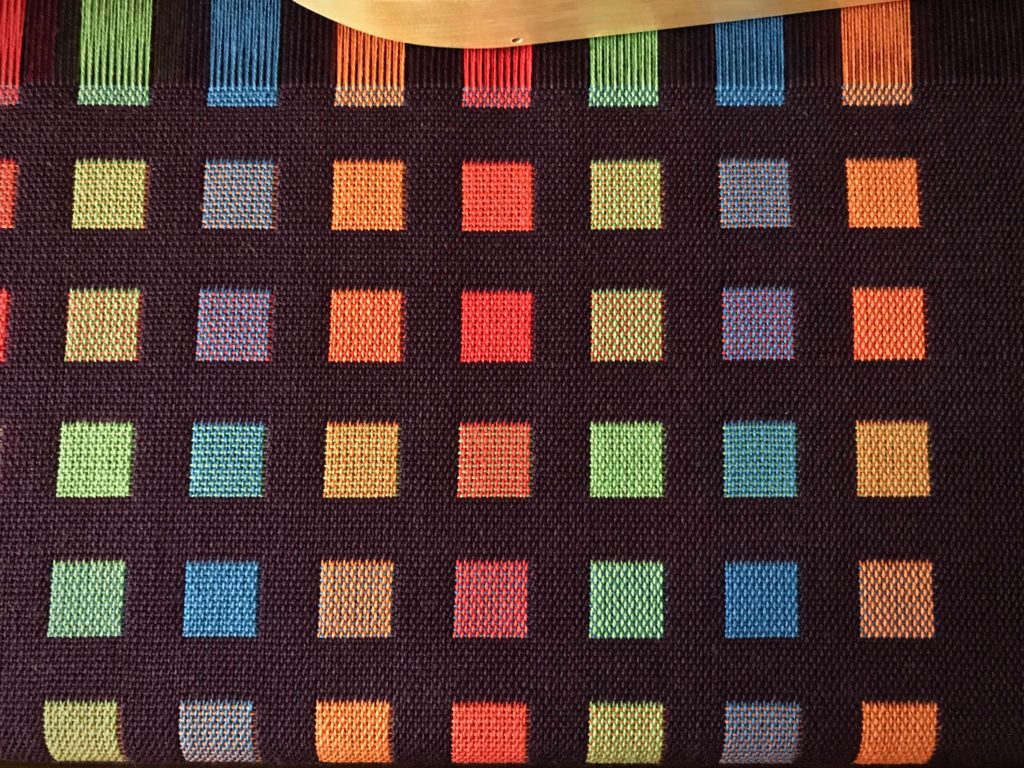
Message. We have a message from heaven. When Jesus came to earth, he not only brought the message, he was the message. Not that we should try to be good like him. Nor that we are already good enough. But that he, the direct link to heaven, would suffer the consequences for all our misdeeds. And rise again. He willingly switched places with us—the great heaven and earth exchange. This good message brings hope and grace to all of us who live on this earthly layer. Thanks to our Grand Weaver’s faithful love, we are woven into a vibrant-color existence through faith, on this layer and the next.
May you see your surroundings in living color.
Joyful weaving,
Karen

